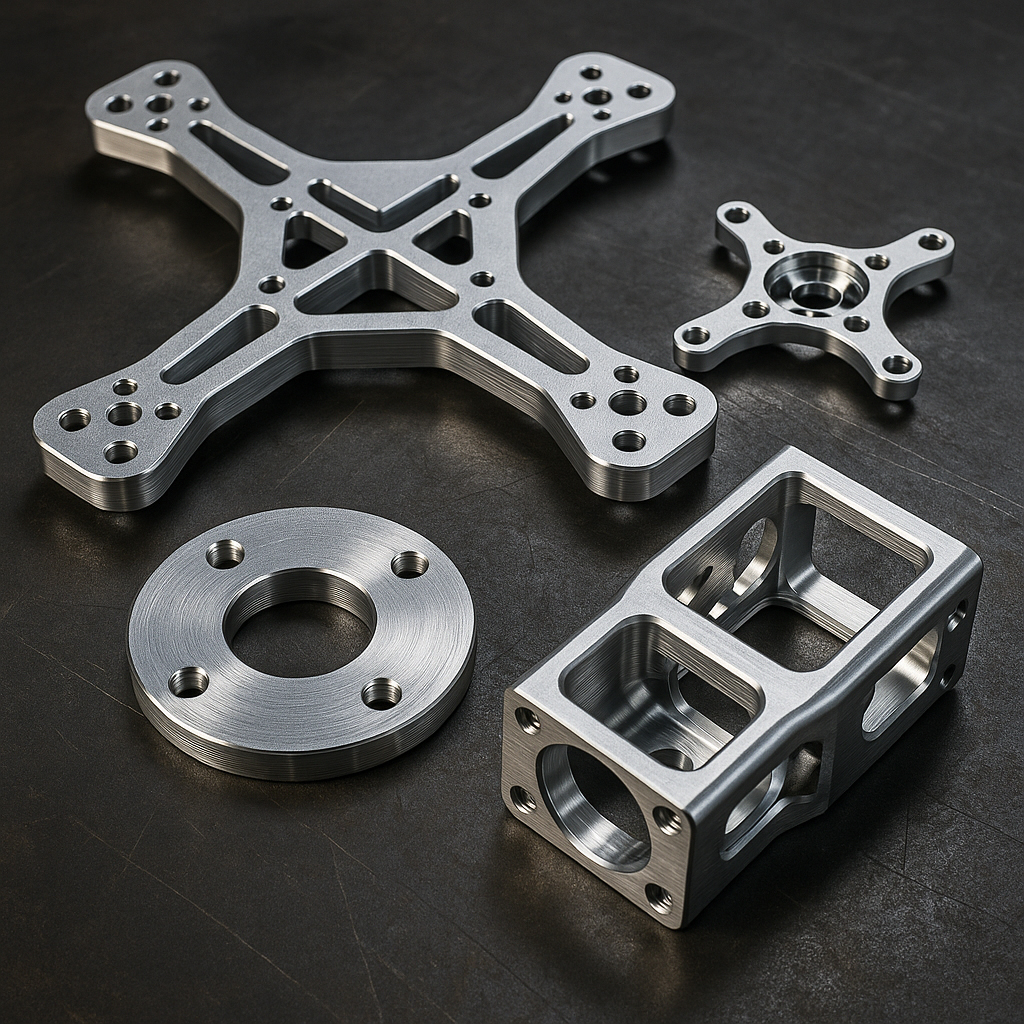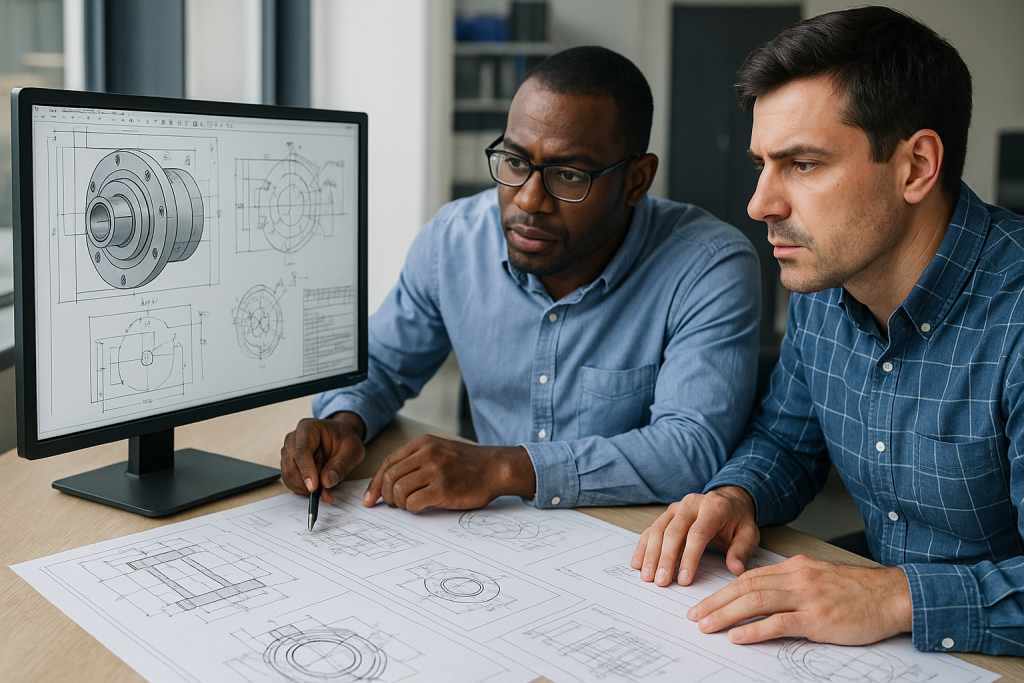
Drones are revolutionizing industries across the globe—from aerial photography and agriculture to logistics, military operations, and environmental monitoring. As their applications expand, so does the demand for drones that are faster, lighter, stronger, and more reliable. Achieving this level of precision and performance requires a manufacturing method that can keep up with the pace of innovation. This is where CNC (Computer Numerical Control) machining plays a vital role. CNC machining enables drone manufacturers to produce high-quality components with exceptional accuracy, directly contributing to improved performance and durability.
I. Precision Engineering for Enhanced Flight Stability
In drone design, even the slightest imbalance can lead to poor flight performance or system failure. CNC machining offers micron-level precision, allowing for exact replication of designs from CAD files. Components such as motor mounts, propeller hubs, and frame brackets can be machined to tight tolerances, ensuring uniformity and structural balance. This precision minimizes vibrations and improves the stability of flight, which is critical for drones used in filming, mapping, or high-speed racing. With CNC machining, manufacturers can trust that every part fits perfectly and functions exactly as intended.
II. Lightweight, High-Strength Materials
Flight efficiency heavily depends on the drone’s weight-to-strength ratio. CNC machining supports a wide variety of lightweight, yet strong materials—most commonly aluminum alloys, carbon fiber, and titanium. These materials are ideal for drone components such as structural frames, arms, and landing gear. CNC processes can remove material efficiently, producing parts with minimal weight without compromising structural integrity. The result is a drone that can fly longer, carry more payload, and withstand tough conditions, whether it’s an urban delivery drone or a long-range industrial UAV.
III. Customization and Aerodynamic Optimization
No two drones are exactly the same—especially in professional or industrial applications. CNC machining allows for custom part fabrication, enabling manufacturers to fine-tune aerodynamics and component layouts. For example, a racing drone might benefit from sleek, narrow arms to reduce air drag, while a delivery drone could use reinforced mounts to support larger batteries. CNC machining’s versatility supports innovative designs and continuous improvements, giving engineers the freedom to push boundaries without tooling constraints.
IV. Improved Thermal Management
Heat management is often an overlooked but vital factor in drone performance. Motors, controllers, and battery systems generate significant heat during operation. CNC machining can create precise heatsinks, vented motor mounts, and cooling enclosures that help dissipate heat more efficiently. Better thermal control translates to longer operating times, improved battery life, and reduced risk of overheating—especially important for drones in industrial, rescue, or surveillance missions that demand continuous operation.
V. Durability Under Harsh Conditions
Drones often operate in challenging environments—high winds, rain, dust, and impact from hard landings. CNC-machined parts are known for their durability and resistance to wear and corrosion. Strong metals like titanium and anodized aluminum are ideal for critical components such as gimbals, arm joints, and landing gear. Unlike molded plastic parts, CNC-machined components can withstand repeated stress and extreme conditions, extending the drone’s operational lifespan and reducing the frequency of repairs or part replacements.
VI. Repeatability and Assembly Accuracy
A key benefit of CNC machining is its ability to produce consistent, repeatable parts across multiple production runs. This consistency is crucial for accurate assembly and component interchangeability. When each drone frame or bracket is cut to the exact same specification, the assembly process becomes more streamlined, reducing alignment issues and improving product reliability. It also simplifies inventory and maintenance for companies managing drone fleets.
VII. Fast Iteration and Prototyping for Innovation
Innovation thrives on iteration. CNC machining supports rapid prototyping, enabling engineers to quickly produce and test new part designs. Without the need for molds or extensive setup, new concepts can move from CAD to physical form in a matter of hours or days. This flexibility allows drone designers to experiment, identify flaws, and implement improvements faster—shortening development cycles and keeping their technology ahead of the curve.
VIII. Cost-Effective Production for Custom or Niche Drone Designs
For drone startups, research teams, or specialized manufacturers, CNC machining provides a cost-effective solution for small-batch or custom parts production. There’s no need for expensive injection molds or long tooling lead times. CNC machining offers on-demand manufacturing for unique builds, prototype validation, or niche applications like underwater drones or high-altitude UAVs. It combines affordability with high-end manufacturing capabilities.
Conclusion
CNC machining has become an essential tool in the advancement of drone technology. By delivering precision, enabling lightweight yet durable structures, and supporting rapid customization and thermal management, CNC machining directly enhances both the performance and lifespan of drones. Whether developing a racing drone, a military-grade surveillance UAV, or a commercial delivery aircraft, manufacturers rely on CNC machining to bring their vision to life—quickly, accurately, and reliably. As the drone industry continues to evolve, CNC machining will remain at the core of its progress.
FAQs
1. What is CNC machining and how is it used in drone manufacturing?
CNC (Computer Numerical Control) machining is a manufacturing process where pre-programmed software directs the movement of cutting tools to produce precise parts. In drone manufacturing, CNC machining is used to create critical components such as frames, propeller hubs, motor mounts, and brackets with high accuracy and consistency.
2. Why is CNC machining preferred for making drone parts?
CNC machining offers:
-
High precision, which improves flight stability
-
Material flexibility, such as aluminum, titanium, and carbon fiber
-
Durability, with parts that withstand vibration, weather, and impact
-
Customization, allowing aerodynamic and structural optimization
-
Quick prototyping, ideal for fast iteration and innovation
3. Which drone components are commonly CNC machined?
Typical CNC-machined drone parts include:
-
Propeller adapters and hubs
-
Motor mounts
-
Arms and landing gear
-
Camera gimbal brackets
-
Heatsinks and enclosures
-
Custom drone frames
4. What materials are best for CNC drone parts?
The most popular materials include:
-
Aluminum alloys – lightweight and strong
-
Titanium – extremely durable and corrosion-resistant
-
Carbon fiber – ultra-lightweight and stiff
-
Plastics (e.g. Delrin, nylon) – used in lighter-load components
Material choice depends on the drone’s application, budget, and weight requirements.
5. How does CNC machining improve drone flight performance?
CNC machining provides extremely tight tolerances, resulting in perfectly balanced and fitted parts. This minimizes vibrations, reduces drag with aerodynamic shaping, and ensures better weight distribution—all of which lead to smoother, more stable, and more efficient flights.
6. Can CNC machining help with drone cooling?
Yes. CNC-machined components such as heatsinks, vented motor housings, and cooling frames help dissipate heat generated by motors and electronics, improving drone performance and preventing overheating during prolonged use.
7. Is CNC machining cost-effective for small drone production runs?
Absolutely. CNC machining is ideal for low- to medium-volume production and prototyping. It eliminates the need for expensive molds and allows manufacturers to produce custom or niche parts quickly and cost-effectively.



